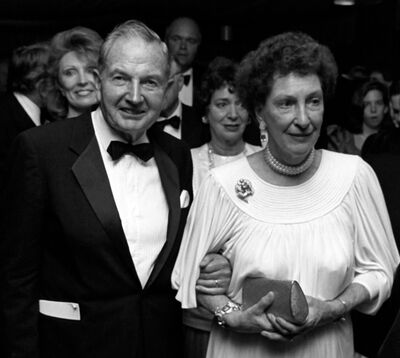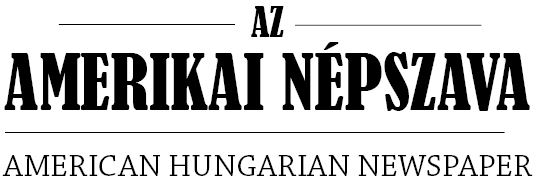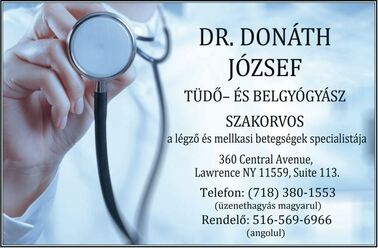David Rockefeller, the U.S. banker, philanthropist, presidential adviser and heir to one of history’s most fabled fortunes, has died. At 101, he was the world’s oldest billionaire.
He died Monday at his home in Pocantico Hills, New York, according to an emailed statement from Fraser P. Seitel, a family spokesman. The cause was congestive heart failure.
Rockefeller was the youngest and last-surviving grandson of Standard Oil founder John D. Rockefeller, the nation’s first billionaire. He was the only one of John D. Rockefeller Jr.’s five sons who spent his entire professional career in the corporate world, rising to chief executive officer of Chase Manhattan Bank during his 35 years at the company.
He was also a confidant of world leaders, from Deng Xiaoping in China to Nelson Mandela in South Africa, from the shah of Iran to Henry Kissinger. Rockefeller famously asked President Jimmy Carter to let the deposed shah come to the U.S. for medical treatment, leading to the seizure of American hostages in Tehran from 1979 to 1981.
Rockefeller was equally well known for his philanthropy. In 2006, he bequeathed $225 million to the Rockefeller Brothers Fund, which he and his brothers established in 1940 to promote social change worldwide. The year before, he donated $100 million each to two New York institutions: the Museum of Modern Art, which was co-founded by his mother, and Rockefeller University, a medical-research school started by his grandfather.
“No individual has contributed more to the commercial and civic life of New York City over a longer period of time than David Rockefeller,” former New York Mayor Michael Bloomberg said in a statement. “During my time in City Hall, he was always there for the city when we called,” said Bloomberg, the founder and majority owner of Bloomberg News parent Bloomberg LP.
In 2008 Rockefeller gave $100 million to his alma mater, Harvard University in Cambridge, Massachusetts.
“The range of David Rockefeller’s business and philanthropic and political connections is perhaps unequaled,” said Ron Chernow, the author of “Titan,” a 1998 biography of John D. Rockefeller.
David Rockefeller’s death closes a chapter in the family’s storied history. Known simply as “The Brothers,” David, Laurance, John, Nelson and Winthrop traversed the intersecting worlds of business, politics, philanthropy and the arts as no other U.S. family had ever done.
The Brothers
Laurance, who died in 2004, was a venture capitalist, environmentalist and adviser to five U.S. presidents on conservation. Nelson, who died in 1979, was the four-term New York governor and U.S. vice president under President Gerald Ford. John D. Rockefeller III, the oldest brother who was killed in a 1978 automobile accident, led the fundraising effort to develop New York’s Lincoln Center for the Performing Arts. Winthrop, who died in 1973, was the former governor of Arkansas.

Rockefeller brothers in 1967.
Their sister, Abby Rockefeller Mauze, known as “Babs,” died in 1976.
Once the nation’s wealthiest family, the Rockefellers today pale in comparison with 21st century tycoons such as Microsoft Corp. co-founder Bill Gates or investor Warren Buffett.
Rockefeller once joked that he was the only Rockefeller of his generation who had to “work for a living.” He was either chairman, president or CEO of Chase from 1957 to 1981, creating a global financial institution, traveling to 103 countries and meeting with dozens of presidents, kings and prime ministers. He accumulated about 150,000 names in an electronic Rolodex.
“Because I started sooner, I think I probably knew more heads of state than anyone else, possibly with the exception of Henry Kissinger, but maybe even including” him, Rockefeller said in a December 2003 interview.
Rockefeller was criticized for meeting with dictators including Cuba’s Fidel Castro and Iraq’s Saddam Hussein. A member of the Council on Foreign Relations for more than 60 years and its chairman for 15, Rockefeller was also a frequent target of conspiracy theorists because of his membership in secretive international policy groups such as the Trilateral Commission and the Bilderberg Group.
“Maybe in another 20 years I’ll outlive all my bad press,” Rockefeller said in the interview.
At Chase, he outlasted rivals, scandals, operational problems and board pressure to retire on schedule at age 65. Today, Chase is part of JPMorgan Chase & Co., the biggest U.S. bank by assets, after Chemical Banking Corp. acquired Chase in 1995. The combined company added J.P. Morgan & Co. five years later and Bank One Corp. in 2004.
JPMorgan Merger
Rockefeller said he was shocked by the merger with J.P. Morgan, which united the Rockefellers’ bank with the legendary bank of their only true early 20th-century rival for financial power, J. Pierpont Morgan.
Rockefeller, as chairman of the Downtown-Lower Manhattan Association, and his brother Nelson, as governor, played key roles in developing the World Trade Center and the Wall Street financial district in the 1960s and 1970s.
They sought to boost the lower Manhattan office market as their father had, at their urging, worked to shore up Midtown during the Great Depression by building the Rockefeller Center complex. During their construction, the Twin Towers were often dubbed “David” and “Nelson” by the press.
Rockefeller, who watched the twin towers burn from his 56th-floor Rockefeller Center office on Sept. 11, 2001, was an honorary member of the panel to design a memorial to the victims of the terrorist attacks.
In 2002, David Rockefeller published “Memoirs,” the first autobiography by a member of his family since his grandfather’s “Reminiscences of Men and Events” in 1909. Reviewers described the book as a rare candid view of a private family, with discussions of fraternal schisms and his wife’s depression, though they said it lacked sensationalism and soul-baring.
Defending Grandfather
Rockefeller wrote of his grandfather with reverence, parrying old depictions of John D. Rockefeller Sr. as a greedy, ruthless robber baron. He defended Standard Oil’s industry monopoly.
“That was Grandfather’s greatest achievement: building the petroleum industry and, in the process, creating the modern corporation,” he wrote. “It was an organizational triumph that transformed the business world.”
David was the first Rockefeller to unite the more than 100 descendants of John Sr. He was the organizer of annual family meetings at the Rockefeller estate at Pocantico Hills, which overlooks the Hudson River north of New York City. He encouraged his relatives’ philanthropic and educational efforts, such as his son David’s role as chairman of the National Parks Foundation.
None of the fourth-generation Rockefellers are likely to replace David as the family’s standard-bearer.
“No one can step into his shoes,” said Warren T. “Lindy” Lindquist, Rockefeller’s World War II buddy and business associate, in a 1995 interview with the New York Times. “Not because they aren’t good, smart, talented people but because it’s just a different world, and they have different interests.”
Lindquist died in 2003.
Early Life
David Rockefeller was born on June 12, 1915, in New York, the youngest child of John D. Rockefeller Jr., who spent most of his time preserving John Sr.’s philanthropy, and Abby Aldrich Rockefeller.
Rockefeller attended the experimental Lincoln School of Columbia University’s Teachers College in Manhattan and graduated from Harvard College in 1936.
He studied at the London School of Economics and received a Ph.D. in economics in 1940 from the University of Chicago, which his family had founded. His thesis, “Unused Resources and Economic Waste,” argued that capitalists seek not only to make money but also to serve their employees and society.

David Rockefeller and wife Margaret „Peggy” in 1987.
Also in 1940, he married Margaret “Peggy” McGrath, who died in 1996. They had two sons and four daughters.
In his first job, Rockefeller drafted replies to letters sent to New York Mayor Fiorello LaGuardia for $1 a year. When World War II broke out, he resisted signing up for service until his mother urged him to do his military duty.
Rockefeller declined to use his father’s influence to secure an officer’s commission, enlisting as an Army private. He served from 1942 until 1945, rising to captain.
He joined Chase National Bank, where his uncle, Winthrop Aldrich, was chairman, in 1946 at the age of 30. Rockefeller’s father — and before that, his grandfather — had long been the bank’s biggest individual shareholders, and the family held two board seats.
Though tagged as a spoiled rich kid by Aldrich’s successor, John J. McCloy, Rockefeller rode the subway to work for a decade and worked his way up through various departments, including a stint overseeing the Latin America business, to become co-CEO after McCloy retired in 1960.
McCloy, Rockefeller wrote, was indecisive about a successor. Rockefeller threatened to quit when board members discussed having George Champion, who was 11 years older and had been with the bank two decades longer, as sole CEO for a time. Instead, Rockefeller shared power for eight years with Champion before he was named the sole CEO in 1969.
At Chase
During the 1960s, Rockefeller used his family name and global contacts to increase foreign branches to 73 from 11. Chase was the first Western bank to open branches in Moscow and Beijing, and it made loans in Africa, Asia and Latin America. Rockefeller also hired management professor Peter Drucker as a consultant and created human resources, marketing and planning departments.

David Rockefeller at New York International in 1963.
Critics said Rockefeller’s international focus led to the neglect of Chase’s everyday operations. By the early 1970s, the bank had suffered shaky real estate investments, bond losses that forced it to restate earnings, bad loans and technological problems.
Citibank, which would become Citigroup Inc., was closing in on Chase’s market share. Rockefeller was forced to focus simultaneously on the bank’s internal deficiencies and global expansion.
In “Memoirs,” he said he had to fight to keep his job in 1975, with director and family adviser J. Richardson Dilworth telling him during a helicopter flight up the Hudson River that he had limited time to turn the bank around. A week later, the board gave him another year, and after restructuring management and the way the bank made loans, he was able to continue until his retirement in 1981, just before he turned 66.
Foremost a financier, Rockefeller was often a conduit for high-level diplomacy on his Chase trips, flying more than 5 million miles and meeting 200 heads of state in 35 years. He developed a close relationship with then-Secretary of State Kissinger, a longtime adviser to his brother Nelson, and argued for President Richard Nixon’s overtures to Communist China in the early 1970s.
Vietnam War
In the 1960s and early 1970s, protesters targeted him as a power behind U.S. foreign policy, including the Vietnam War. Some of his own children then in college opposed his politics, and he wrote about heated dinner table arguments with his daughter Abby, a draft-resistance counselor drawn to Marxism.
Rockefeller focused on managing family affairs after his Chase retirement. Since the 1940s the brothers held formal meetings, with David serving as secretary, that continued until the late 1970s.
“The five of us had had widely diverging and, in some ways, conflicting interests,” he wrote, “but largely because of these regular get-togethers we maintained a basic respect and affection for one another, something that has not always been the case with other wealthy families.”
In 1979, David, Laurance, and the widows of John and Nelson organized Rockefeller & Co., an outgrowth of the family office started by their grandfather when he moved to New York from Cleveland a century earlier. The firm has since branched out as a wealth manager for clients not affiliated with the family.
Rockefeller Center
David Rockefeller estimated that his father lost $110 million in 20 years on his stake in Rockefeller Center, which was started in 1932 as a show of faith in the U.S. economy. David later served as chairman of Rockefeller Center Properties Inc., which held the mortgage, and worked to avert a mid-1990s financial collapse after its purchase by Japan’s Mitsubishi Estate Corp.
In January 1995, the 79-year-old Rockefeller flew to Japan to try to persuade Mitsubishi not to put the property in bankruptcy. He broke his leg walking into Mitsubishi’s offices, then stayed to plead his case before heading to the hospital for treatment. Three months later, the filing occurred anyway.
A year later, Rockefeller bought the center back in partnership with Goldman Sachs Group Inc. In 2001, the group sold it to New York developer Tishman Speyer Properties at a profit, ending seven decades of family control.
Rockefeller upheld the family’s philanthropic tradition, giving away more than $900 million during his lifetime. In 1940, he joined the board of the Rockefeller Institute for Medical Research, established in 1901 by his grandfather, and a decade later succeeded his father as board chairman, serving for 25 years. The Institute was renamed Rockefeller University in 1965.
He endowed the David Rockefeller Center for Latin American Studies at Harvard and was chairman of the school’s board of overseers.

Susan Rockefeller, David Rockefeller and Ariana Rockefeller at MoMA party in 2016.
Inheriting a love of art from his mother, Rockefeller amassed a collection of modern and impressionist works valued at more than $500 million in the early 1990s. After his mother’s death in 1948, he took her seat on the board of the Museum of Modern Art, serving more than 16 years as chairman between 1958 and 1993.
Rockefeller remained sharp and agile into his 90s, going to the office daily at 10 a.m. and leaving at 5 p.m. He exercised before work, and sometimes drank a glass of white wine with lunch.
Leadership of the family now falls upon the generation known as “The Cousins,” the great-grandchildren of John D. Rockefeller. David Rockefeller said he was confident his six children and grandchildren would carry on the philanthropic and activist legacy of the family’s century-old fortune.
“If they will have learned the important things about life and how to lead it, that could be my greatest contribution,” Rockefeller said in a May 2007 interview. “I have reason to think that they will.”












